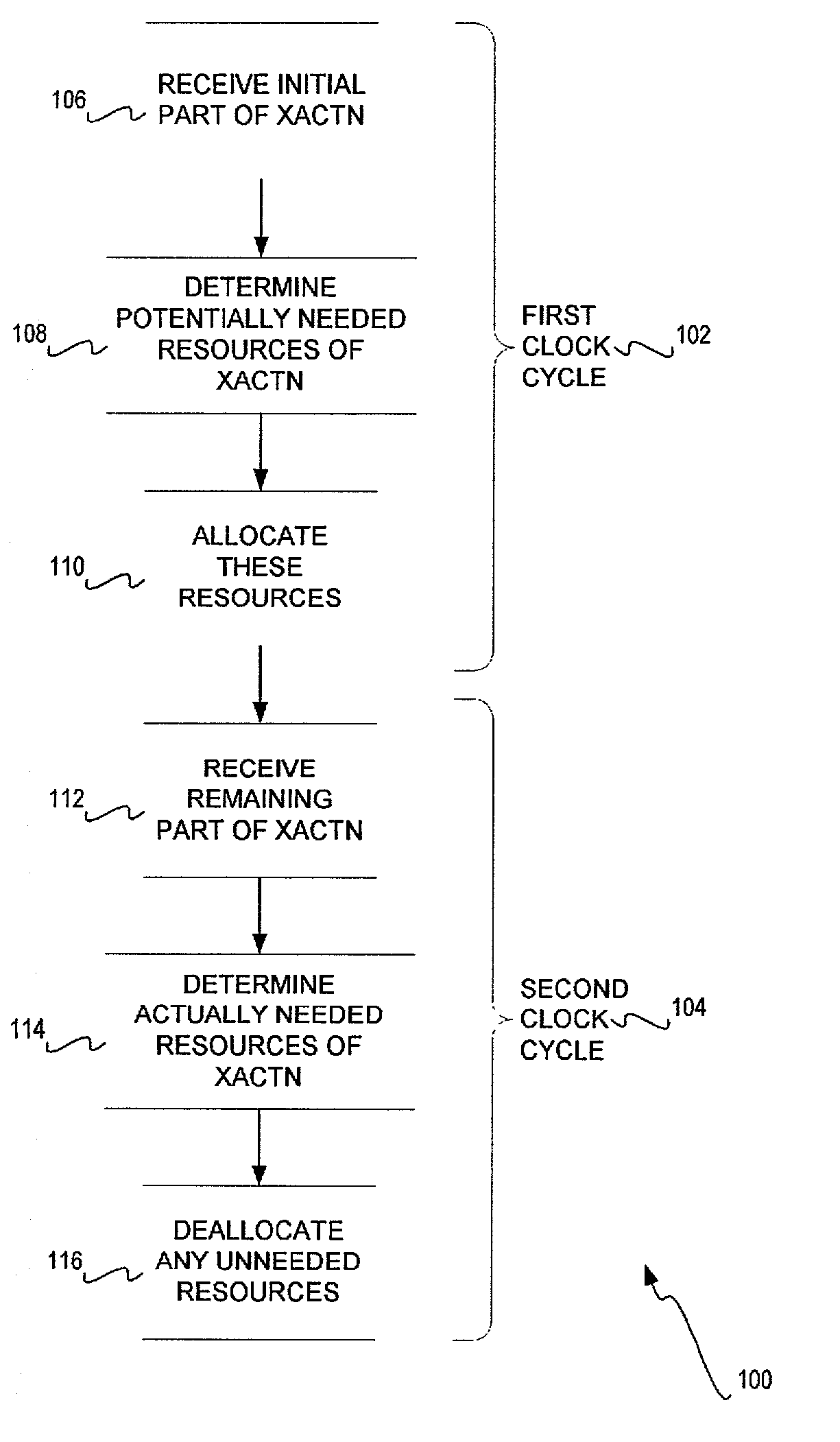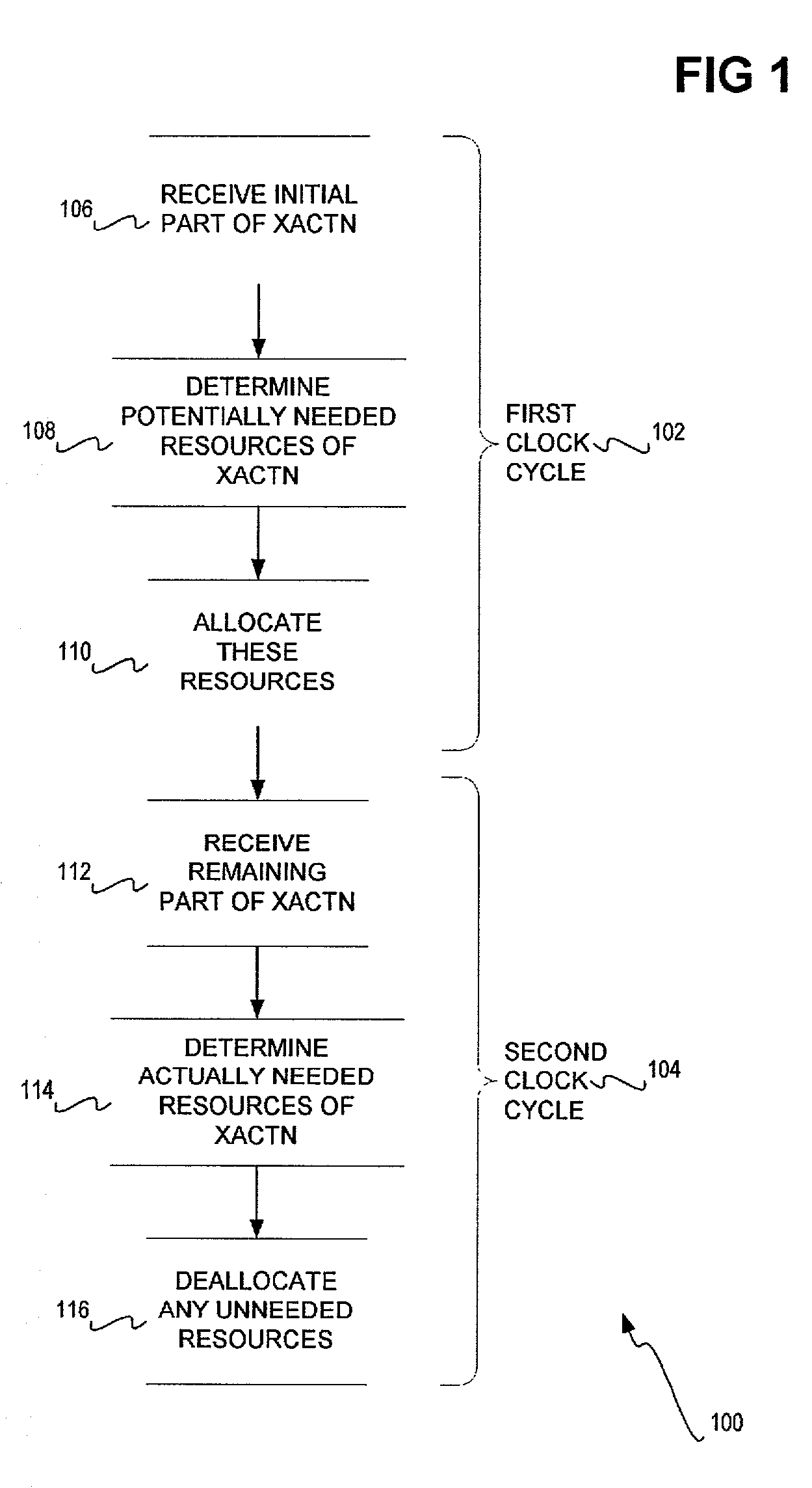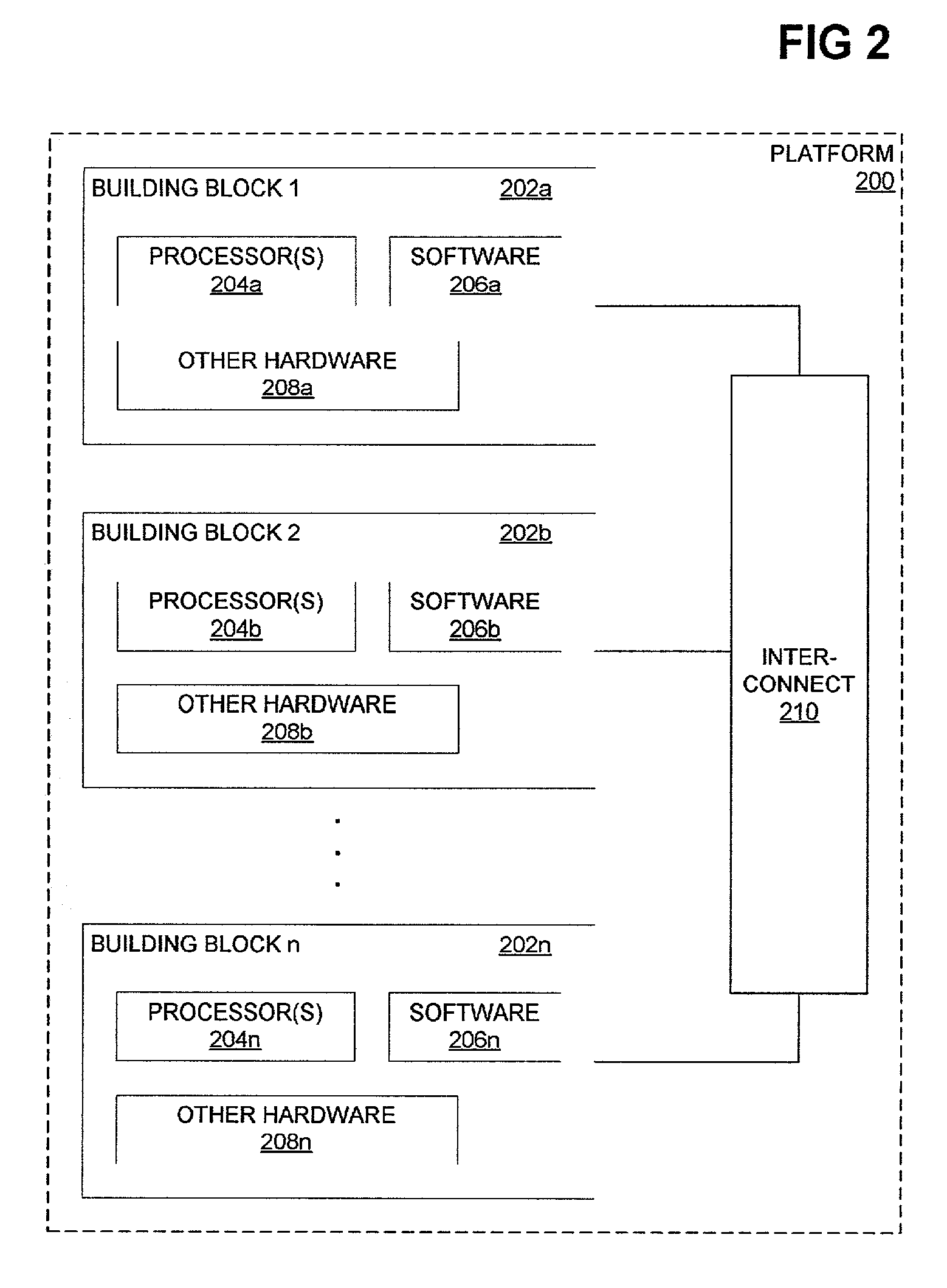Allocation of potentially needed resources prior to complete transaction receipt
a technology of resource allocation and transaction receipt, applied in the field of multiprocessor computer systems, can solve the problems of resource unused resources and inability to be allocated to either transaction
- Summary
- Abstract
- Description
- Claims
- Application Information
AI Technical Summary
Benefits of technology
Problems solved by technology
Method used
Image
Examples
Embodiment Construction
[0018]Overview
[0019]FIG. 1 shows a method 100 according to a preferred embodiment of the invention. The method 100 is performed, such as by a transaction manager, over a first clock cycle 102 and a second clock cycle 104. In addition, parts of the method 100 may be implemented as means within a computer-readable medium of an article of manufacture. The computer-readable medium may be a recordable data storage medium, such as a floppy disk, a CD-ROM, a hard disk drive, and so on, as well as a modulated carrier signal. Furthermore, the method 100 may also include other steps and / or acts, but only those steps and / or acts that preferably illustrate performance of the method 100 are explicitly depicted in FIG. 1.
[0020]The initial part of a transaction is first received in the first clock cycle (106). Based on this initial part of the transaction, all the resources potentially needed by the transaction are determined (108), and allocated (110). Note that these resources potentially needed...
PUM
 Login to View More
Login to View More Abstract
Description
Claims
Application Information
 Login to View More
Login to View More - R&D
- Intellectual Property
- Life Sciences
- Materials
- Tech Scout
- Unparalleled Data Quality
- Higher Quality Content
- 60% Fewer Hallucinations
Browse by: Latest US Patents, China's latest patents, Technical Efficacy Thesaurus, Application Domain, Technology Topic, Popular Technical Reports.
© 2025 PatSnap. All rights reserved.Legal|Privacy policy|Modern Slavery Act Transparency Statement|Sitemap|About US| Contact US: help@patsnap.com



